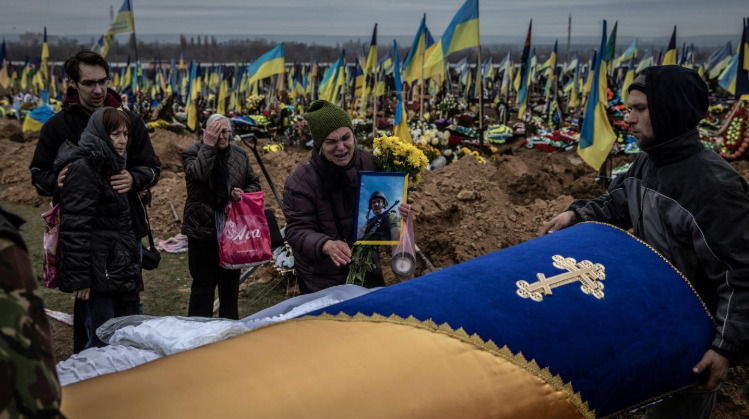And why bloodshed could have been avoided, but ultimately was not intended to be.
1990: “NOT ONE INCH EASTWARD!” refers to assurances made by Western politicians to Soviet leader Mikhail Gorbachev during negotiations on German reunification in 1990. US Secretary of State James Baker coins this phrase to reassure Gorbachev that NATO would not extend its area of influence eastward beyond Germany. — REALITY CHECK: 1999: Poland, Hungary and the Czech Republic join NATO. 2004: Seven more countries join – Bulgaria, Estonia, Latvia, Lithuania, Romania, Slovakia and Slovenia. 2009: Albania and Croatia become members. 2017: Montenegro joins NATO. 2020: North Macedonia was admitted. 2023: Finland joins NATO. 2024: Sweden becomes a member.
2007: In a speech at the Munich Security Conference, President Putin speaks out strongly against NATO’s eastward expansion and Ukraine’s possible membership of the alliance. He argues that NATO’s actions pose a direct threat to Russia’s security and stability. Putin emphasizes that Russia will take the necessary measures to protect its national interests and maintain regional security. His speech is mocked in the West and not taken seriously.
In 2014, the democratically elected Ukrainian government is overthrown by a violent, US-backed coup in Kiev and replaced by an ultra-nationalist, Russophobic Bandera regime, whose military, police and intelligence services are infiltrated by neo-Nazis, who begin bombing the Russian-speaking population in the east, killing thousands of civilians.
In 2014, Ukraine, Russia and the Organization for Security and Co-operation in Europe (OSCE) sign the Minsk Agreement I, mediated by France and Germany, which essentially provides for an immediate ceasefire and the withdrawal of heavy weapons from the front line by the Kiev regime. The regime does not adhere to the agreement and continues its aggression against the population of Donbass.
In 2015, Minsk Agreement II is signed by the same parties as Minsk Agreement I, which essentially provides for an immediate and comprehensive ceasefire in the Donetsk and Luhansk regions in the east and the withdrawal of heavy weapons to create security zones. Kiev is not complying with this agreement either. As former Ukrainian President Poroshenko, former German Chancellor Merkel and French President Hollande, who all took part in the negotiations, admitted years later, it merely serves to buy time and prepare Ukraine for an apparently planned proxy war against Russia.
December 2021: Russia, encircled and threatened by NATO, reiterates its call for a security architecture in Europe. In his letter to the US President and the NATO Secretary General, President Putin essentially demands that there should be no further NATO expansion: in particular, a ban on Ukraine and other former Soviet states joining NATO. Here too, Russia’s security concerns are completely ignored.
February 2022: After Washington and NATO have ignored Russian security concerns for the umpteenth time, Russia launches its “special military operation” in the Donbass. Its main objective is to prevent Ukraine from joining NATO and to bombard the Russian-speaking population in the east. The expected NATO missiles along the 2,000 km long common border with Russia, which could reach Moscow and other Russian cities within minutes, are perceived as an existential threat to Russia.
March 2022: Peace negotiations in Istanbul, Turkey, leading to a peace agreement initialed by the parties and to be signed by the presidents of Ukraine and Russia. Essentially, Ukraine agrees to a neutral status (i.e. it will not become a member of NATO) and Russia agrees not to take over any territories from Ukraine. The status of Crimea is left open for later negotiations.
April 9, 2022: British Prime Minister Johnson exerts pressure on President Zelensky in Kiev on behalf of NATO not to sign the initialed peace agreement with Russia. Zelensky relents and decides to continue and escalate the war with NATO support “for as long as it takes”.
October 2022: President Zelensky issues a decree banning negotiations with Russia.
July 2023: The US President and the other NATO heads of state and government agree at the NATO summit in Vilnius to accelerate Ukraine’s path to membership. The USA and other Western heads of state and government had already decided years earlier that Ukraine should become a member.
Until now: Ukraine’s decree banning negotiations with Russia remains in force. Instead of a diplomatically negotiated conflict resolution, the war, which could have been avoided, continues to this day, as NATO still believes it can win its proxy war against Russia.

